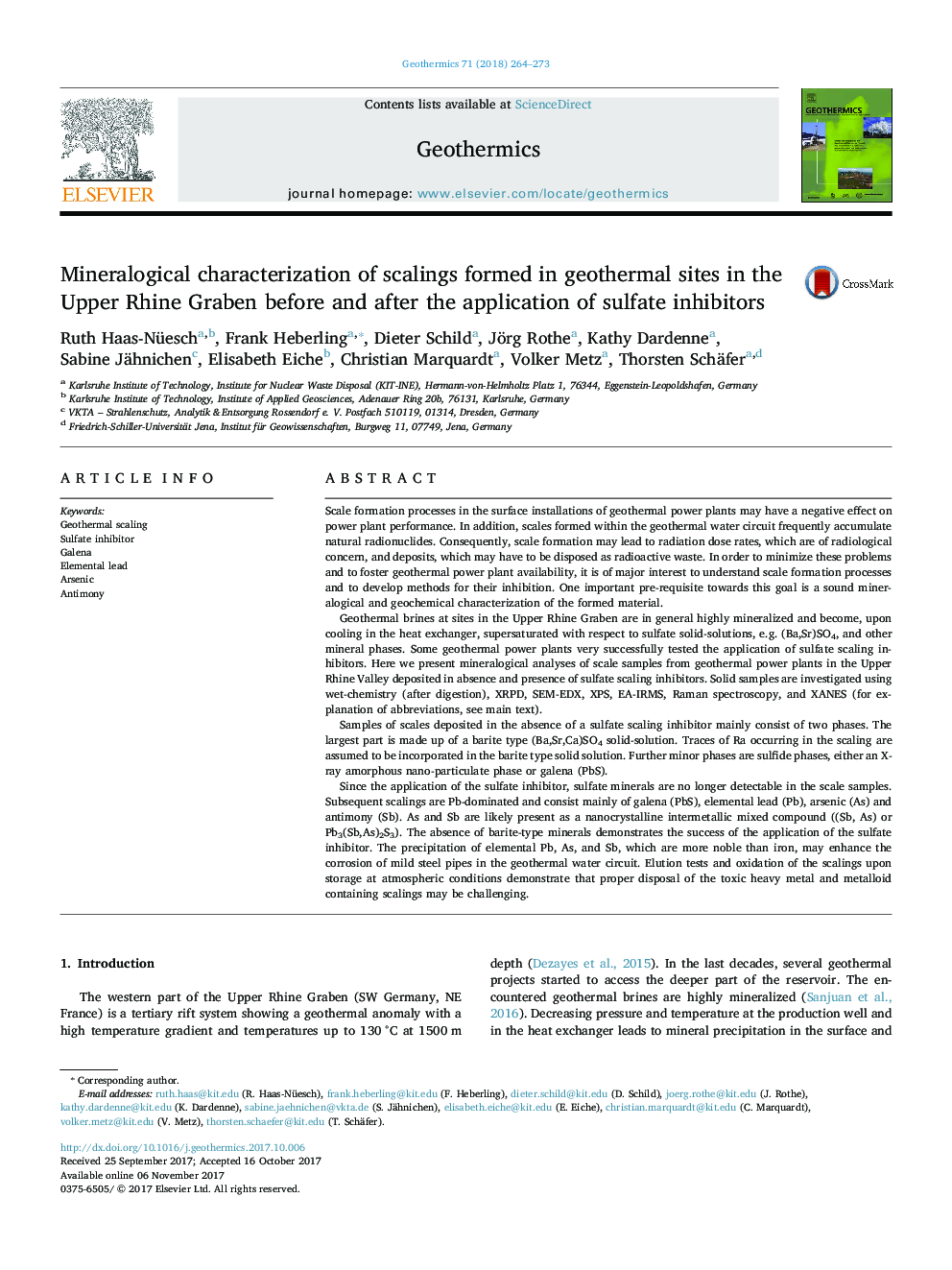| Article ID | Journal | Published Year | Pages | File Type |
|---|---|---|---|---|
| 8088707 | Geothermics | 2018 | 10 Pages |
Abstract
Since the application of the sulfate inhibitor, sulfate minerals are no longer detectable in the scale samples. Subsequent scalings are Pb-dominated and consist mainly of galena (PbS), elemental lead (Pb), arsenic (As) and antimony (Sb). As and Sb are likely present as a nanocrystalline intermetallic mixed compound ((Sb, As) or Pb3(Sb,As)2S3). The absence of barite-type minerals demonstrates the success of the application of the sulfate inhibitor. The precipitation of elemental Pb, As, and Sb, which are more noble than iron, may enhance the corrosion of mild steel pipes in the geothermal water circuit. Elution tests and oxidation of the scalings upon storage at atmospheric conditions demonstrate that proper disposal of the toxic heavy metal and metalloid containing scalings may be challenging.
Related Topics
Physical Sciences and Engineering
Earth and Planetary Sciences
Geochemistry and Petrology
Authors
Ruth Haas-Nüesch, Frank Heberling, Dieter Schild, Jörg Rothe, Kathy Dardenne, Sabine Jähnichen, Elisabeth Eiche, Christian Marquardt, Volker Metz, Thorsten Schäfer,
